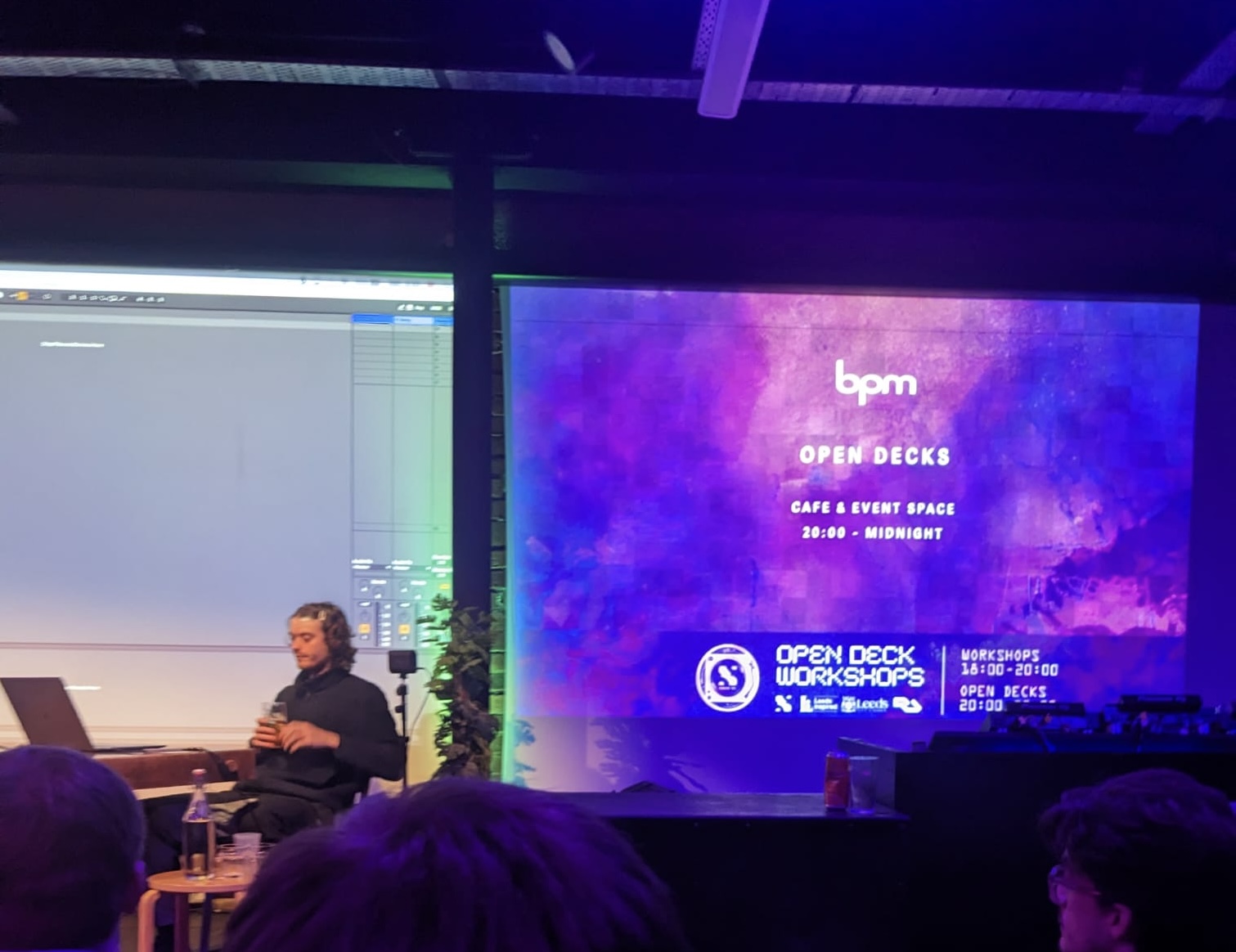Chasing Matilda Djerf: Watchdog or Witch-hunt?
An opinionated piece exploring the allegations of Matilda Djer’s workplace misconduct and the backlash that followed.
An opinionated piece exploring the allegations of Matilda Djer’s workplace misconduct and the backlash that followed.
John Galliano bids farewell to Maison Margiela after ten years, leaving behind a legacy of innovation and artistry
On October 2nd, it was announced that the French photographer-turned-designer Hedi Slimane would leave Celine after almost seven years as Creative Director. This came as no surprise to those in the industry—there had been speculation for months prior to Slimane’s departure.
A Creative Director stepping down is neither new nor unusual, but in recent years, the switch-around has become a game of musical chairs. All within the last year: Sean McGuire took over from Sarah Burton at McQueen, Adrian Appiolaza moved to Moschino, Virginie Viard stepped down from Chanel, Kim Jones left Fendi, Alessandro Michele, from Gucci, is now at Valentino, and now, of course, Hedi Slimane has left Celine. There is a concern that the rate of departures is linkedto the ever-quickening pace of the trend cycle. After all, the purpose of a new Creative Director is to breathe new life and creativity into a brand—crucial for survival and beneficial for marketing. Fashion houses now face greater pressure to entice buyers. They are more than overlords of what is trending, they also operate as a trickle-down economy, as famously explained by Miranda Priestly in The Devil Wears Prada. They report to shareholders and fight against increasing costs, competition, and media coverage—there is no room for mistakes.
As a Creative Director, the job is not only designing seasonal collections but also spearheading the brand’s entire creative vision. It is a role that requires garment-making abilities, a great imagination, and business knowledge. A Creative Director can influence everything from the design of the clothes down to the runway. For instance, Matthieu Blazy of Bottega Veneta recently assigned animal-shaped beanbags to guests at Veneta’s Spring/Summer 2025 show, continuinghis playful vision through the collection, each animal supposedly matching each guest’s “vibe”. Alongside this, a Creative Director must also consider a fashion house’s values and heritage, which sometimes conflicts with their ideas for the brand.
Slimane has a history of making fashion houses his own. While Creative Director of YSL in 2012, he removed the ‘Yves’ from the brand name. Even at Celine, originally styled as Céline, Slimane dropped the accent over the ‘E’ before of his first show. This caused an uproar, with Slimane accused of erasing the brand’s French heritage. Though it may seem fickle, in fashion, the devil is in the details. To understand its significance, imagine someone removing a letter from your name or changing the pronunciation—suddenly, you feel like a new person with a new identity.

Heidi Slimane leaves Celine after seven years as Creative Director/Photo Credits: Dominique Charriau via Gettyimages.com
Creating his own distinct Celine is quite an accomplishment, especially since his predecessor was the industry favorite, Pheobe Philo. Philo was renowned for empowering women in a way that freed them from sexualization. Celine has always catered to women, initially dedicated to luxe sportswear, but Philo modernized the brand with unmatched elegance, pioneering ‘quiet luxury’. Today, brands like The Row, owned by the Olsen twins, emulate this style, while lesser brands like Molly Mae’s Maebe, attempt to replicate it. Philo has always been and continues to be, about timelessness and practicality, designing for women in a way that reflects her values as both a business owner and mother.
Slimane presented a contrast to Philo’s aesthetic at Celine. His designs took a cheekier approach. His ‘working women’ were still professional but younger and more tech-savvy. Slimane showed more feathers and sparkles—less work, more play. Like Philo, Slimane also achieved commercial success; LVMH, Celine’s parent company, reported a record year in sales under Slimane, making clear his departure wasn’t due to a lack of success. Business of Fashion reported that it was ultimately boardroom disagreement that led to his exit, with Slimane demanding “A historically high salary” and “Royalties on all manner of creative outputs”.
Given his vision and needs, it may be time for the French designer to start his brand, following in the footsteps of Phoebe Philo, who has launched her label since Celine. Slimane is not short of talent and is skilled at styling, design, and photography. He also has experience at various fashion houses. But there are suggestions he might move to another French legacy brand, possibly Chanel, which has yet to announce Virginie Viard’s replacement. Karl Lagerfeld, Chanel’s previous Creative Director, is said to have admired Slimane.
As for the future of Celine, Michael Rider, previously Creative Director at Polo Ralph Lauren, has been chosen to replace Slimane. It will be interesting where Rider takes Celine’s working women next. For those who dismiss or don’t understand the constant switching of Creative Directors, it is comparable to the movement of football players, or betteryet, managers. Just like fans might wonder if Thomas Tuchel, the new manager after Gareth Southgate’s resignation, can “finally bring it home”, those in fashion watch to see if a Creative Director will excel in a new fashion house. One wonders if it will respect a brand’s heritage while taking it to new heights. Will Rider succeed in following the legacies of Philo and Slimane at Celine? And where will Heidi Slimane go next?
Inside TRAD Collective, a sustainable fashion hub founded by Jo and James Fenwick in Leeds, which is redefining shopping.
Chloe Connelly examines Pharrell Williams’ Pre-Fall 2024 collection for Louis Vuitton.
Examining the controversy surrounding the inclusion of the first woman in GQ’s ‘Man of the Year’ 2023 issue.
Last week, independent bar, café and music venue Sheaf St. announced it was closing its doors.
The venue, which opened in 2017, was a core part of the vibrant music scene in Leeds.
The Gryphon spoke to Josh Igoe, an events manager for the University of Leeds BPM electronic music and DJ society. He said Sheaf St would be “dearly missed by all who went and all those they supported”.
Josh, who DJs under the name Anop, paid credit to the venue for facilitating society events so enthusiastically, “few clubs in Leeds supported the local scene as much as Sheaf”.
Despite the oft-repeated joke of the unavoidable number of aspiring DJs in Leeds, new talent can have a difficult time raising their profile.
It’s a competitive scene, and many clubs are unwilling to take the risk of new, less experienced DJs.
Instead, and with several key exceptions, much of the highly commercialised nightlife in the city exhibits a predictable, homogenous mix.
Conversely Sheaf St provided a place for up-and-coming artists, including students, hosting open deck nights with BPM as well as events including a workshop with DJ Adam Pits.

Venues are facing disastrously perfect storm of conditions, outlined by the owners of Sheaf St. in a statement on their website, “low attendance, rising costs, increasing fees, significantly reduced spend per head, and skyrocketing utilities and stock costs”
The continuing Cost of Living Crisis, means millions in the UK are having to make incredibly difficult decisions about spending. Outdated perceptions of students living rich off of their maintenance loans hides the reality, as loan increases stagnate versus rising inflation.
According to Unipol, a housing charity, the average cost of rent in England is only £24 below the average maintenance loan. This means a majority of students have little to no excess maintenance loan left after they’ve paid for accommodation.
Data from the National Union of Students found that 96% of students are ‘cutting back’ on expenses, with a third of those in the study were living on less than £50 a month after rent and bills.
Nightlife is thus an expensive luxury, and one of the first things go.
However, the closure of Sheaf St draws in additional, more localised considerations.
Sheaf St. said: “The nightlife industry is a vital economic driver for our city…We believe Leeds doesn’t fully recognise this asset”.
Similarly to the Tetley building, the closure of which The Gryphon covered last month, Sheaf St cited the Aire Park Development as a significant factor in their closure.

Aire Park, a 3-hectare development project in the Southbank area (across the river below Call Lane), aims to ‘regenerate’ a previously industrial area of Holbeck. It raises concerns about gentrification and the damage to pre-existing businesses and residents in the pursuit of constructed communities.
The Gryphon is awaiting a response from the developers and council in regards to these concerns around Aire Park.
Accompanying the announcement, Sheaf St. updated their website to say:
“THANK YOU AND GOODNIGHT! YOU LOVELY PEOPLE!”.

Their upbeat farewell cements the underlying rallying cry of “Support your Local!”, passed down for decades. A prompt, for those who financially can, to ditch the Spoons and put your money where it matters.
“The progress I’ve made in my career and doing such different roles is
-Dame Sharon White
largely down to that adaptability that has become a part of who I am.”
The annual Alice Bacon Lecture returned last Thursday, welcoming Dame Sharon White to the Great Hall to deliver a speech.
The lecture, held collaboratively by the University of Leeds Centre for Democratic Politics and Shadow Chancellor Rachel Reeves, is named after Leeds’ first woman MP, Alice Bacon, and celebrates the achievements of pioneering women.
As the current Chair of the John Lewis Partnership, and with experience working in the civil service, White was the perfect candidate to speak on this years’ theme: The Female Leader.
White focused on themes of social mobility and the power of comprehensive education
throughout her lecture, and emphasised how lucky she felt to have had the opportunities she
did.
She began, however, by reflecting on the opportunities her parents did not – as part of
the Windrush generation, saying their decision to move to the UK was probably
“the decision that had the biggest impact on the opportunities I’ve had in my life.” Stories of
her mother washing clothes in a river in her youth and having to leave school at age eleven
helped cement her gratitude for the education she received.
White’s parents were from Jamaica, and after migrating to the UK in the 50s, she grew up in
East London. She spoke on always having had a strong sense that she didn’t belong – not in
a way that made her feel without the right to be in the room, she says, but an awareness of
having got there by ways of a different road.
White’s speech was confident and compelling, evidencing the resilience that can come from these experiences. This style has helped her manoeuvre in spaces which are typically less inclusive towards Black women, such as in the civil service, where White pioneered as the first Black Permanent Secretary at the Treasury.
White went as far as to assert that “the progress I’ve made in my career and doing such different roles is largely down to that adaptability that has become a part of who I am.”
On being a woman working in the civil service, White said she could only remember
a few moments of “real unconscious bias or discrimination”, both involving her return to work
after having children. Her insistence on the importance of flexibility in the workplace to allow
people to have a family without sacrificing their career ambitions or receiving lower pay, was moving to hear.
These instances of misogyny followed Dame White into the business sector, receiving a harsh backlash for her actions throughout her time at the John Lewis Partnership.
Whilst she didn’t directly address this in the lecture, she acknowledged the greater scrutiny and higher standards often put on women in business. White also mentioned, with a knowing glance, that her time in Ofcom stood her in good stead in her transition to John Lewis, being a company that attracts “quite a lot of public interest”.
Listening to Dame Sharon White, a woman who has utilised her differences as strengths in her work, left me, and I’m sure most students in the audience, feeling emboldened in my aspirations post-university.
White’s reflections on her experiences in the workplace spoke both to the progress made in terms of diversity and inclusion, and the significant work left to do. She ended her lecture by saying that the importance of women supporting women cannot be overstated, reminding the audience that progress is never linear.
The lecture closed on this quote from former First Lady of the United States, Michelle Obama:
“You should never view your challenges as a disadvantage. Instead, it’s important for you to understand that your experience facing and overcoming adversity is actually one of your biggest advantages.”
-Michelle Obama
In this article, Alicia Kaye discusses the importance of voicing opportunities for individuals in the BAME community, featuring real-life experiences from guest speakers.
The internet is in uproar over Glossier’s revamped Balm Dotcom. Heidi Tam dives into this makeup mishap.